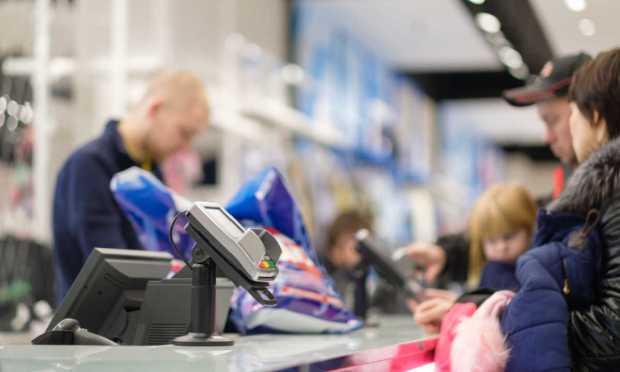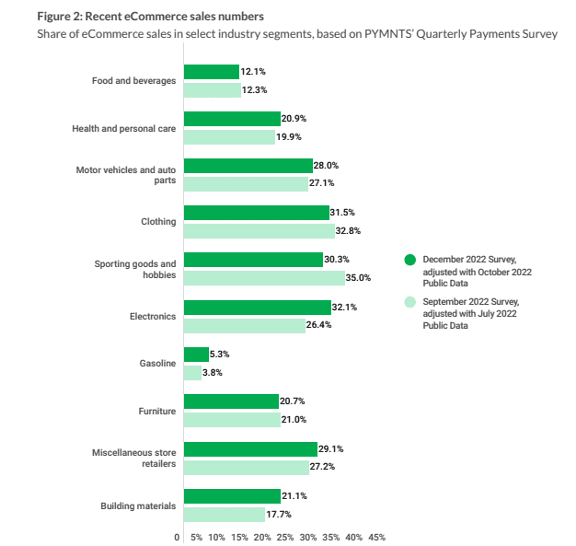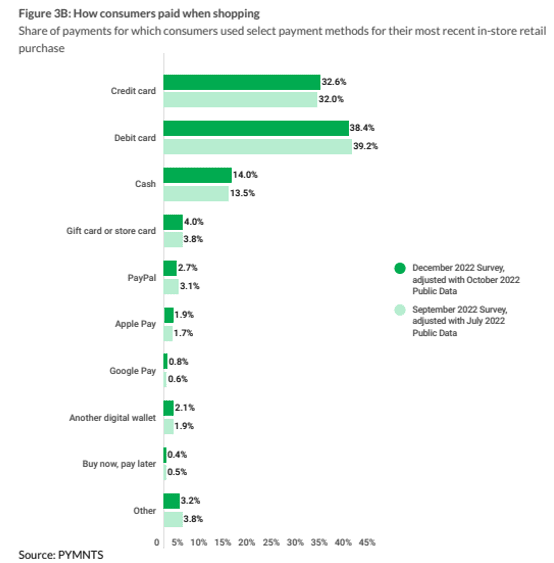Digital Wallet Use Surges Online but Lags for In-Store Purchases

The return to physical retail was perhaps the bigger story of 2022, but the rising number of consumers shopping online and paying with digital wallets are trends to watch as those numbers climb.
PYMNTS recorded the growth of eCommerce in “Digital Economy Payments: The Ascent of Digital Wallets,” the latest in our monthly report series chronicling the rapid rise of digital shopping and payments, with a sample of close to 2,800 consumers saying they broke out the smartphone more often at the checkout to use a digital wallet in the fourth quarter of 2022.
As much as grocery shopping is moving online, and with it the battle of the retail titans vying for bigger pieces of the action, non-grocery retail goods dwarfed online food shopping in Q4 2022, clocking in at $1.1 trillion according to our sample, compared to $182 billion spent on groceries.
Looking into eCommerce categories that rose or fell during the study period, consumers dialed back their apparel and sporting goods spend in Q4, for example, as discretionary items took a backseat to the necessities of life at the end of a year that saw inflation soar to its highest level in decades.

Among notable gains for the fourth quarter were healthcare and automotive. While healthcare spending rose one percentage point, automotive wasn’t far behind gaining 0.9% in the period as those with cars spent to keep them running to avoid sky-high prices on new and used cars.
People also bought more gas in Q4 as prices at the pump fell and stabilized versus the summer fuel price spike, one of the most glaring examples of inflation in 2022.
Another retail category gainer was consumer electronics which had seen falling numbers throughout 2022. This healthy 5.7% increase can likely be credited to gift buying during the winter holidays.
Online grocery sales were essentially flat between Q3 and Q4, although we did record a slight drop in Q4 (12.1%) versus Q3 (12.3%) likely attributable to deal-chasing in physical stores.
How We Paid
Credit cards (40.5%) and debit cards (22.8%) remained the preferred payment methods for most consumers, though the impact of digital wallets is becoming more apparent in our tallies.
For example, the study states that while “38% of consumers used debit cards for their last in-store purchase, just 23% used them online. Digital wallets are responsible for this gap, as they collectively represent a much higher share of online spending than in-store spending.”

Specific examples include PayPal at 13.5% of total consumer online retail spend compared to just 2.7% in-store. “Apple Pay reached 4.3% of the total amount spent on online purchases, and Google Pay took 2.5%. Usage of these payment methods dropped by 50% for in-store transactions, at 1.9% and 0.8%, respectively,” per the study.
Buy now, pay later (BNPL) also has a more commanding lead in eCommerce than in physical stores, as in Q4 we found BNPL used in 2.8% of transactions versus just 0.4% in-store.
With consumers getting more guarded about generating debt, debit cards “still dominate for everyday essentials such as groceries, leaving little room for alternative payment methods. Consumers used debit cards to pay for 43% of in-store grocery retail sales and 40% of online grocery sales in the last 12 months. Credit cards maintained a 31% share of all grocery retail this quarter, both online and in-store.”
We found that lower-income households prefer using debit cards and cash, representing over half of all retail spending in that bracket. Credit cards are more popular with those in the middle and high-earning groups who made more than one-third of retail purchases with credit.
Get the study: Digital Economy Payments: The Ascent of Digital Wallets
For all PYMNTS retail coverage, subscribe to the daily Retail Newsletter.
